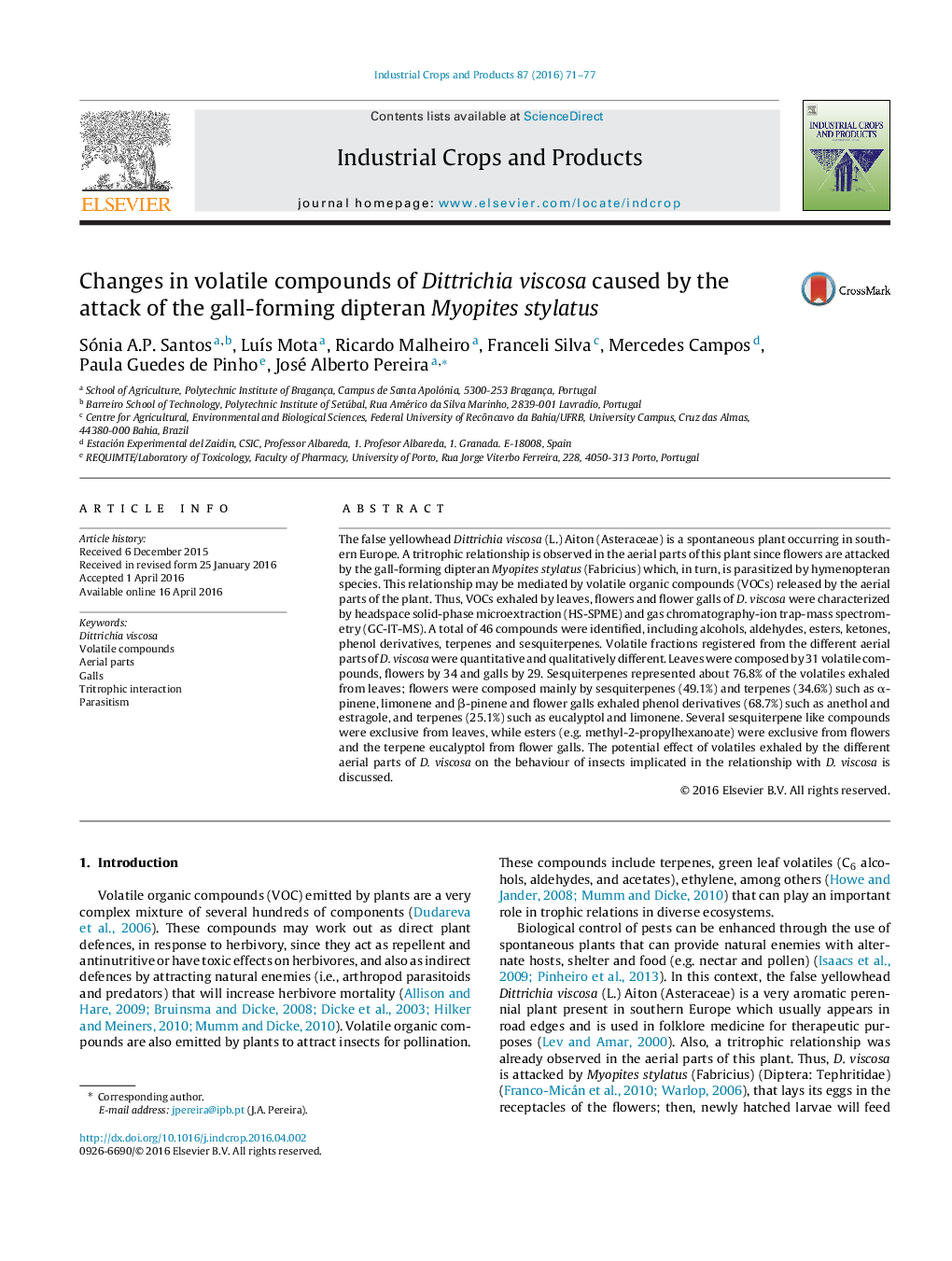| کد مقاله | کد نشریه | سال انتشار | مقاله انگلیسی | نسخه تمام متن |
|---|---|---|---|---|
| 4512234 | 1624823 | 2016 | 7 صفحه PDF | دانلود رایگان |

• Volatile compounds exhaled by the aerial parts of Dittrichia viscosa were studied.
• Leaves, flowers and flower galls of D. viscosa differed in their volatile compounds.
• Leaves and flowers mainly released sesquiterpenic compounds.
• Eucalyptol was released only by flower galls.
• Volatiles of D. viscosa can influence insects in olive agroecosystems.
The false yellowhead Dittrichia viscosa (L.) Aiton (Asteraceae) is a spontaneous plant occurring in southern Europe. A tritrophic relationship is observed in the aerial parts of this plant since flowers are attacked by the gall-forming dipteran Myopites stylatus (Fabricius) which, in turn, is parasitized by hymenopteran species. This relationship may be mediated by volatile organic compounds (VOCs) released by the aerial parts of the plant. Thus, VOCs exhaled by leaves, flowers and flower galls of D. viscosa were characterized by headspace solid-phase microextraction (HS-SPME) and gas chromatography-ion trap-mass spectrometry (GC-IT-MS). A total of 46 compounds were identified, including alcohols, aldehydes, esters, ketones, phenol derivatives, terpenes and sesquiterpenes. Volatile fractions registered from the different aerial parts of D. viscosa were quantitative and qualitatively different. Leaves were composed by 31 volatile compounds, flowers by 34 and galls by 29. Sesquiterpenes represented about 76.8% of the volatiles exhaled from leaves; flowers were composed mainly by sesquiterpenes (49.1%) and terpenes (34.6%) such as α-pinene, limonene and β-pinene and flower galls exhaled phenol derivatives (68.7%) such as anethol and estragole, and terpenes (25.1%) such as eucalyptol and limonene. Several sesquiterpene like compounds were exclusive from leaves, while esters (e.g. methyl-2-propylhexanoate) were exclusive from flowers and the terpene eucalyptol from flower galls. The potential effect of volatiles exhaled by the different aerial parts of D. viscosa on the behaviour of insects implicated in the relationship with D. viscosa is discussed.
Journal: Industrial Crops and Products - Volume 87, September 2016, Pages 71–77